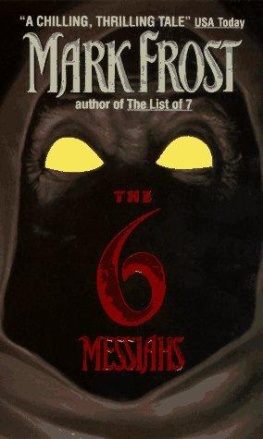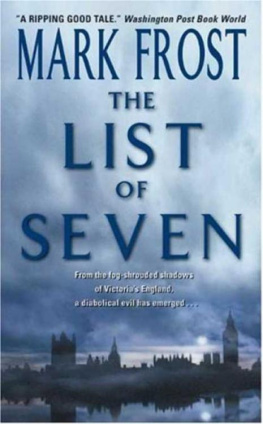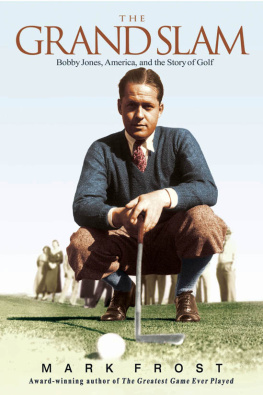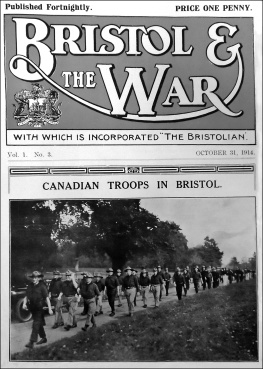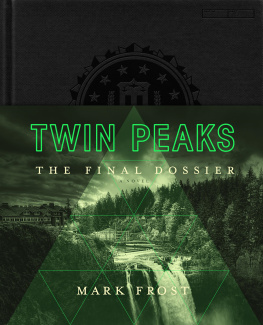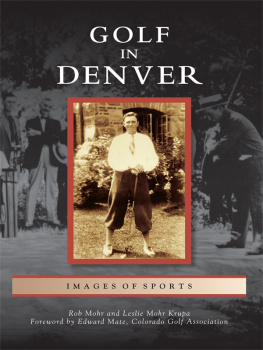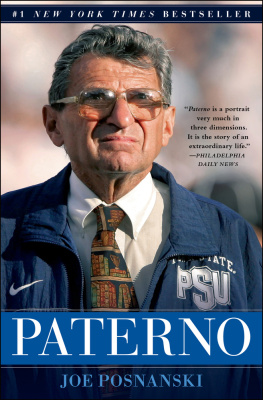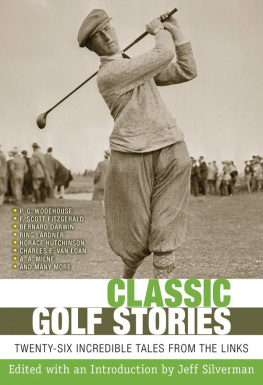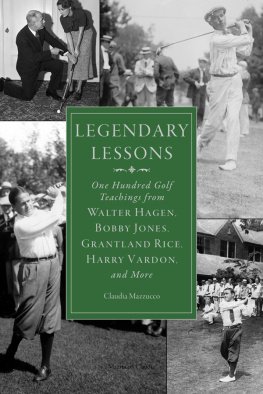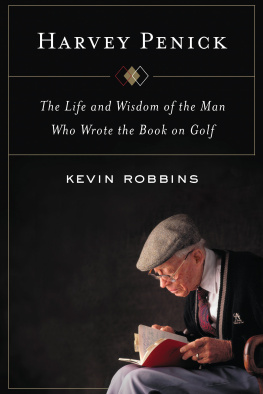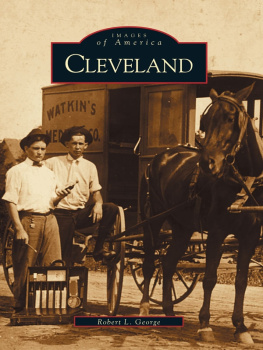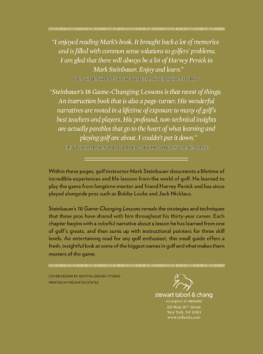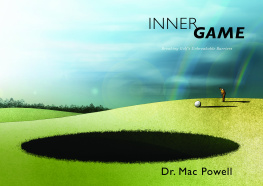Contents
BRITISH PROFESSIONALS
HARRY V ARDON , Jersey, England, 18701937
T OM V ARDON , Jersey, England, 18721942
W ILLIE P ARK J R ., Musselburgh, Scotland, 18641925
J OHN H ENRY T AYLOR , Northam, England, 18711963
J AMES B RAID , Earlsferry, Scotland, 18701950
T ED R AY , Jersey, England, 18771943
W ILFRED R EID , Bulwell, England, 18841973
BRITISH PRESS
B ERNARD D ARWIN , Kent, England, 18761961
A LFRED H ARMSWORTH , LORD NORTHCLIFFE , Dublin, Ireland, 18661922
FRENCH PROFESSIONALS
A RNAUD M ASSY , Biarritz, France, 18771958
L OUIS T ELLIER , La Boulie, France, 18821949
AMERICAN EXPATRIATE PROFESSIONALS
W ILLIE A NDERSON , North Berwick, Scotland, 18781910
A LEX S MITH , Carnoustie, Scotland, 18721930
W ILLIE S MITH , Carnoustie, Scotland, 18751915
M ACDONALD S MITH , Carnoustie, Scotland, 18901949
J IM B ARNES , Lelant, England, 18871966
AMERICAN HOMEBRED PROFESSIONALS
T OM M C N AMARA , Boston, Massachusetts, 18851957
M ICHAEL K ING B RADY , Brighton, Massachusetts, 18871972
J OHN J. M C D ERMOTT , Philadelphia, Pennsylvania, 18911971
W ALTER H AGEN , Rochester, New York, 18921969
AMERICAN AMATEURS
W ALTER J. T RAVIS , Maldon, Australia, 18621927
J EROME T RAVERS , New York, New York, 18871951
J OHN G. A NDERSON , Boston, Massachusetts, 1884-1933
H EINRICH S CHMIDT , Boston, Massachusetts, 18781951
C HARLES C HICK E VANS , Indianapolis, Indiana, 18901979
F RANCIS O UIMET , Brookline, Massachusetts, 18931967
E DDIE L OWERY , Newton, Massachusetts, 19031984
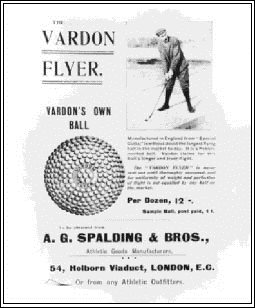
(COURTESY OF SPALDING SPORTS WORLDWIDE, INC.)
Part one
FRANCIS AND HARRY
Golf develops the good qualities of a mans nature and softens the poor ones. It is a developer and builder of character without a peer. It is a leveler of rank and class, where rich and poor meet on common ground. It cultivates patience and endurance under adversity and yet keeps alive the fires of hope.
W ALTER J. T RAVIS
Keep your head down, and keep your eye on the ball.
E DDIE L OWERY

F RANCIS, AGE 7, WITH HIS PARENTS IN FRONT OF 246 C LYDE S TREET .
( COURTESY OF THE COUNTRY CLUB )
Chapter 1
Francis
IT BEGINS WITH the simplicity of a fairy tale.
A small boy, combing through fields of grass for buried treasure, uncovers a magical talisman: a gleaming white ball, pristine, perfectly round, untouched by wear. Two words emblazoned on its cover: VARDON FLYER. That name, so suggestive of powerful, confident, dreamlike flight, burns itself into the boys impressionable psyche. After seven-year-old Francis Ouimet races home to place the ball in the dented tin box that guards his growing cache of riches, the VARDON FLYER immediately becomes his most prized possession. A gift from an unknown god named Vardon.
GEOGRAPHY MAY BE destiny, but in the case of Francis Ouimet, destiny may have been more a result of real estate. The day before Harry Vardons twenty-third birthday in 1893the year he entered his first British Open ChampionshipFrancis DeSales Ouimet was born in Brookline, Massachusetts, a sleepy Boston suburb. Four years later, his family purchased a modest little two-story clapboard house directly across from The Country Club, on a dusty dirt road called Clyde Street.
Franciss father, Arthur Ouimet, a French-Canadian Catholic immigrant, depended on odd jobs to make ends meet; occasionally hed find them as a coachman or gardener for The Country Clubs affluent members. After six generations in Quebec, Arthur was the first of his family to leave Montreal, fleeing the oppressive thumb of the English-Protestant majority to seek his fortune in America; what he found instead was heartbreak. Uneducated, his English clotted with a thick Quebecois accent, the best Arthur could manage in Massachusetts was a life of menial labor governed by the subtle but still profound prejudices of the nineteenth-century Boston gentry. Bostonians called this wave of immigrants Frenchies, consigning them to servile positions that the citys second-generation Irish no longer considered suitable to their rising station.
After establishing himself on Brooklines lower margins, at the age of twenty-eight Arthur Ouimet fell in love and married a beautiful Irish girl named Mary Mahoney. Three years later Mary died in childbirth and their sickly child, named Joseph after Arthurs father, followed her in death only ten weeks later. The disaster scarred Arthur for life; from that point forward he was described only as a cold, hardworking man with a hot and ready temper. He married again in 1888, to another Irish lass, twenty-seven-year-old Brookline native Mary Ellen Burke. Although she was a warm, loving, and infinitely patient woman, for Arthur this second marriage exuded less romance than an air of nineteenth-century practicality, creating a family in order to solidify his economic standing. Within eight years Mary gave him four children: Wilfred, the oldest by three years, then Francis, a daughter, Louise, and finally Raymond, the youngest, born in the house on Clyde Street that Arthur had bought that year. Haunted by nightmarish visions of sliding back down into abject poverty, Arthur had nevertheless put enough aside to buy some of the vacant land behind the house as well. They raised chickens, grew vegetables, sank their own well. Arthur drummed into his children the hard necessity of contributing to the familys welfare; his oldest son, Wilfred, began to caddy at The Country Club not long after the Ouimets moved into their new home.
The house on Clyde Street sat directly across from The Country Clubs seventeenth fairway and green, the sight Francis woke to every morning outside his second-floor bedroom window. Soon after they moved in, his mother used to routinely find Francis, at the age of four, standing across the street, staring at players on the fairway through a stand of beech trees. He didnt know how, he could never later even adequately explain why, but from his first glance, Francis found the forms and rituals of the game mesmerizing. Golf seeped into his young mind; it may be no exaggeration to say Francis was Americas first golf addict who grew up with the game. His familys earliest recollection of the boy would be right at home in a nineteenth-century tall tale, befitting the kind of legends told about Mike Fink or Paul Bunyan; he walked around the house crying for his brother Wilfreds first golf club. When he finally got his hands on ita cut-down driver, nearly as tall as he wasFrancis spent countless hours swinging that club in their backyard. He began attending the one-room Putterham Schoolhouse the following year, and discovered a trespassing shortcut that traversed The Country Clubs fairways. Francis soon developed an uncanny eye for locating lost golf balls on his daily commute and by the age of seven had amassed that precious trove he kept in the old gingersnap tin under his bed.
Francis and Wilfred began their playing careers on the seldom traveled dirt surface of Clyde Street in front of the Ouimet home, digging out holes with the heels of their boots at the base of two streetlamps a hundred yards apart, knocking balls endlessly back and forth. Before they made much headway as players, they turned themselves into golf course architects. When their father brought home a new lawn mower to use on his gardening jobs, the boys waited until Arthur was away at work, then appropriated the mower to hack a primitive three-hole course out of the overgrown cow pasture behind their house.


